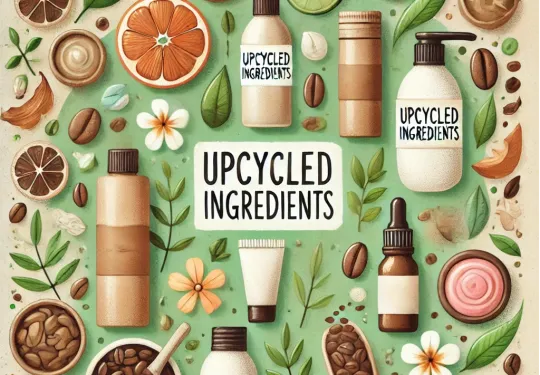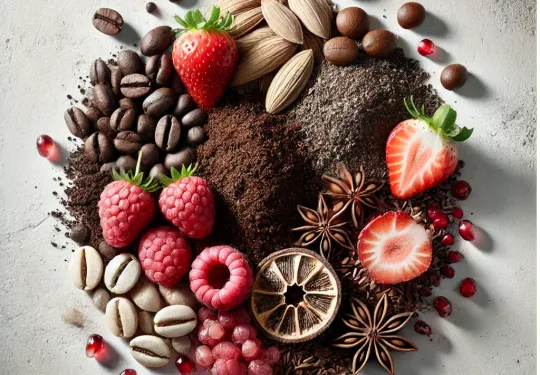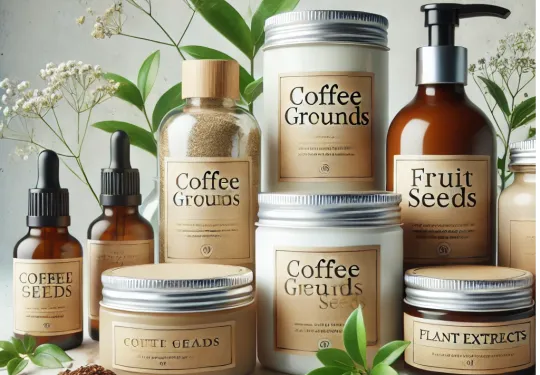Upcycled Ingredients in Skincare: What They Are, Why They’re Trending, and Top Examples
By:
bryan choong
On
16/11/2024Reading time:
0 min
Summary:
The beauty industry is increasingly embracing sustainability, and upcycled ingredients in skincare are at the forefront of this movement. Upcycling, a process of repurposing materials that would otherwise go to waste, allows beauty brands to create effective skincare products while reducing environmental impact. In this post, we’ll explore what upcycled ingredients are, why they’re popular, and some common examples making waves in skincare.
What Are Upcycled Ingredients?
Upcycled ingredients are materials that would normally be discarded but are repurposed into useful skincare ingredients. In skincare, upcycled ingredients typically come from food or plant by-products, such as fruit peels, seeds, or coffee grounds. By finding new uses for these “waste” materials, brands can minimize environmental waste while creating high-quality products.
Upcycling is a zero-waste practice, as it prevents ingredients from ending up in landfills and reduces the need to source entirely new raw materials. With today’s consumers increasingly conscious of the environmental footprint of their beauty products, upcycled ingredients have become a powerful way to align skincare with sustainability values.

upcycled ingredients in skincare
Why Are Upcycled Ingredients Trending Now?
Environmental Awareness: The demand for eco-friendly products is on the rise, with consumers looking for ways to reduce waste. Upcycling directly addresses this concern by giving new life to discarded resources, aligning with the goals of a circular economy.
Unique Ingredients with Powerful Benefits: Upcycled ingredients often contain high levels of antioxidants, vitamins, and essential fatty acids, making them ideal for skincare. Ingredients such as fruit seeds and nut shells that would otherwise be discarded are now recognized for their rich, skin-loving properties.
Transparency and Consumer Trust: Upcycled ingredients add a layer of transparency to brands’ sourcing practices, which appeals to consumers who prioritize ethical and sustainable beauty. Many skincare brands now highlight their upcycled ingredients, emphasizing the story behind each ingredient to build trust with eco-conscious customers.
Support for Local and Small Farmers: Upcycling often involves sourcing ingredients locally or working with small-scale farmers to find valuable us
Examples of Upcycled Ingredients in Skincare
Upcycled ingredients can be sourced from a variety of by-products in the food and agriculture industries. Here are some of the top upcycled ingredients currently trending in skincare:
1. Coffee Grounds
Used coffee grounds, a common waste product from cafes and coffee manufacturers, have found new life in skincare. Coffee grounds are rich in antioxidants and caffeine, which help reduce puffiness, exfoliate dead skin cells, and improve blood circulation. Many body scrubs, exfoliating masks, and eye creams now feature upcycled coffee as a key ingredient.
2. Fruit Seed Oils (Grape, Raspberry, Pomegranate)
Fruit seed oils, extracted from seeds discarded during juice and wine production, are rich in essential fatty acids, vitamins, and antioxidants. Raspberry seed oil, grape seed oil, and pomegranate seed oil are popular upcycled ingredients used in moisturizers and serums. They help hydrate, protect, and soothe the skin, making them ideal for anti-aging and nourishing products.

coffee ground for skincare
3. Orange Peel Extract
Orange peels, often discarded after juice production, are full of beneficial compounds, including Vitamin C and flavonoids, which are potent antioxidants. Upcycled orange peel extract is commonly used in brightening products, as it helps to even skin tone and reduce the appearance of dark spots. It is a natural way to harness powerful skincare benefits while reducing food waste.
4. Olive Leaf Extract
Olive leaves, often left unused in olive oil production, contain antioxidants like oleuropein and flavonoids, which provide anti-inflammatory and skin-soothing effects. Upcycled olive leaf extract is popular in serums and creams for sensitive skin and works as an effective anti-aging ingredient due to its protective and calming properties.
5. Rice Husk and Bran
Rice husk and bran, typically by-products of rice milling, are now commonly used in skincare for their antioxidant and moisturizing properties. Rice bran oil is rich in Vitamin E and fatty acids, making it a nourishing ingredient for dry or sensitive skin. It also offers a gentle way to brighten and improve skin tone, adding a luxurious touch to moisturizers and facial oils.
Benefits of Using Upcycled Ingredients in Skincare
Reduced Environmental Impact: Upcycled ingredients lower the demand for new resources, reduce waste, and lessen environmental pollution by giving new life to by-products.
Effective and Natural Skincare Benefits: Many upcycled ingredients are nutrient-rich and offer valuable skincare benefits, such as hydration, antioxidant protection, and skin renewal.
Aligning with Consumer Values: As sustainability becomes a key consideration for consumers, upcycled ingredients help brands meet these demands while creating products that are both effective and responsible.
Affordable and Scalable: Since upcycled ingredients are often sourced from readily available by-products, they can offer cost-effective and scalable options for skincare brands, making sustainable beauty accessible to a wider audience.

upcycled skincare products